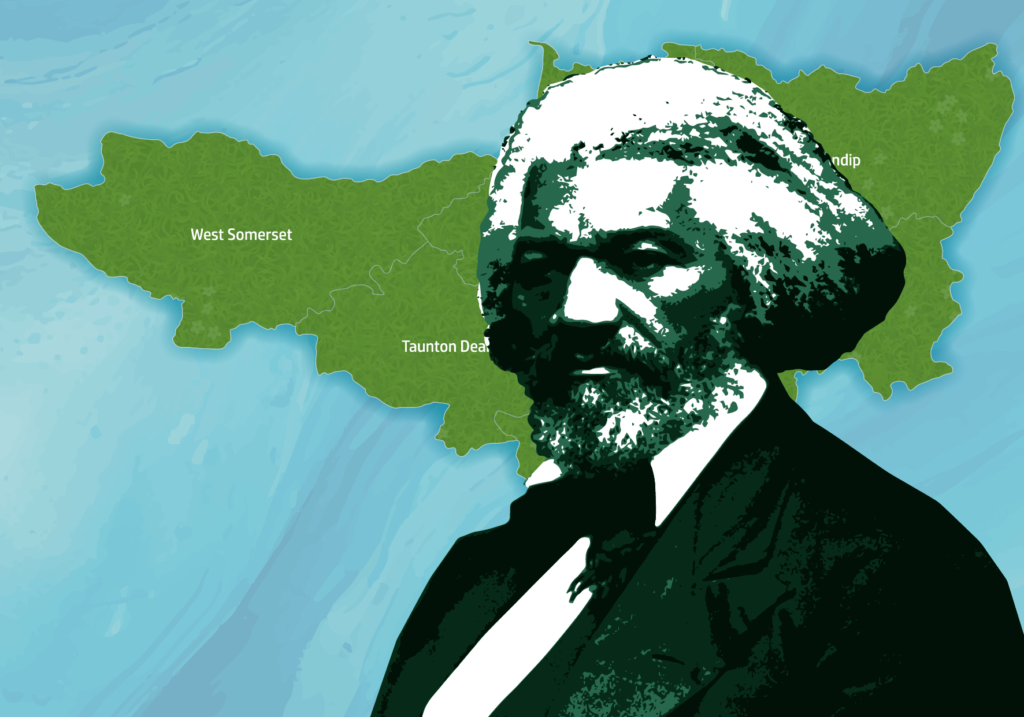This Black History Month Somerset Member of Youth Parliament, Ellie Bealing has been looking into Somerset’s place in black history. From the earliest Homo Sapiens to the Abolitionist Movement and beyond, black history is our history and it’s important that it not get lost to time. Ellie’s article is an eye opening and fascinating read.
It is arguably shameful that when we think of Somerset, we don’t typically consider it as an area made up of great diversity and community, we’re often still trapped in the stereotype of quaint country lifestyles, or defensive villages as depicted in the media of our time – From the action-packed ‘Hot Fuzz’ to the romantic ‘Four Weddings and A Funeral’, and the depiction of the idyllic break from the hustle and bustle of city life in ‘Sarah Beeny’s New Life in the Country’. So, when Black History Month acts to open our eyes to truly look into the mix of cultures nestled in our towns and villages, I wanted to highlight my own findings when researching our county’s history – which is perhaps less one dimensional than we may initially presume.
My first finding was that of the true nature of the famous ‘Cheddar Man’, who was found in Cheddar Gorge in 1903. The skeleton is the oldest Homo Sapien found complete in Britain, being estimated to have lived around 10,000 years ago. Up until recently, it was assumed that those living in such a prehistoric age would have had light skin, however analysis by the Natural History Museum in 2018 has disproved this. Instead, the Cheddar Man’s genetic markers in his DNA indicates that he had dark skin, with other European Skeletons believed to have been alive in similar times have also been found to have dark skin. Before this turning point in our understanding of the physical makeup of our early species, the first appearance of Black people arriving in Britain was said to have been under Roman Rule, some 8,000 years later. This small factor in a web of characteristics truly opened up my mind to challenge my own pre-conceptions of the UK, before English was the national language, or the four nations were combined. In almost all depictions of this period of early human evolutions, its just assumed that everyone would have a light skin tone, and I am guilty of this belief too. This is a minute detail that should be stressed in our education and our visual learning of this period in our history. It’s important that this age commonly associated with white history, is instead recognised as a consequential part of black history too.
When we consider Black History Month, our minds seem intrinsically wired to focus upon slavery, which is undoubtably a shameful and significant part of Britain’s history. It created deep-rooted, institutional prejudices that even 20 plus years into the 21st century, seem part of our communities. So, the story of Frederick Douglass brings our home into the oppression of Black and minority ethnicities in our complex past. He was an American slave, raised separated from his enslaved mother, and treated with brutality by his masters in Maryland. Perhaps the only showcase of care that Frederick received was being taught how to read and write in his adolescence. As a result, when he escaped to New York, under the disguise of a sailor, he was able to rise to prominence in the growing abolitionist movement and provide advice to Abraham Lincoln. He was encouraged by the president to recount the hardships of his life far and wide, and so this brought him to Bridgwater. On 31 August 1846, he delivered a lecture detailing the cruelty of branding, being nailed to crosses, whilst at risk of execution for 71 crimes compared to white folks only facing death for a single offence. His appeal to the audience was to use their powers to add momentum to the abolition movement. Their response was to write a petition, signed by 1,200 to the town of Bridgewater, Massachusetts in which slavery was already outlawed. The two areas exchanged letters of mutual frustration at the state of affairs in their two respective countries. Extraordinarily, William Jolley Nicholls even travelled to America to partake in the civil war, being wounded at the Battle of Mobile Bay. His tombstone after his death aged 79 reads; “fought in the American Civil War for the abolition of slavery”.
These two anecdotes form a wider network of stories of Black History in England and further afield, with many being buried by time. However, it is my hope that many more will feel empowered to share the lives of Black Britons to make sure that no one feels an outsider in their own country, as it’s clear that dark skin has been a core feature of the United Kingdom, long before we once expected.
Ellie
If you want to find out more about Black History, Black History Month and its importance (now more than ever) here in the UK, visit: www.blackhistorymonth.org.uk/
If you want to support black lives in Somerset visit: @BLMTaunton | Linktree

